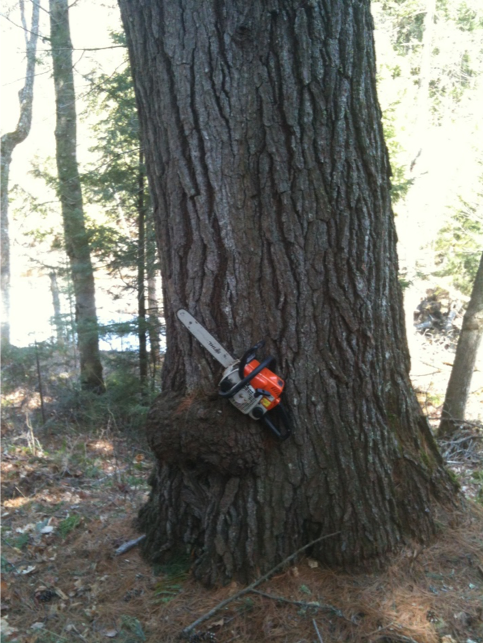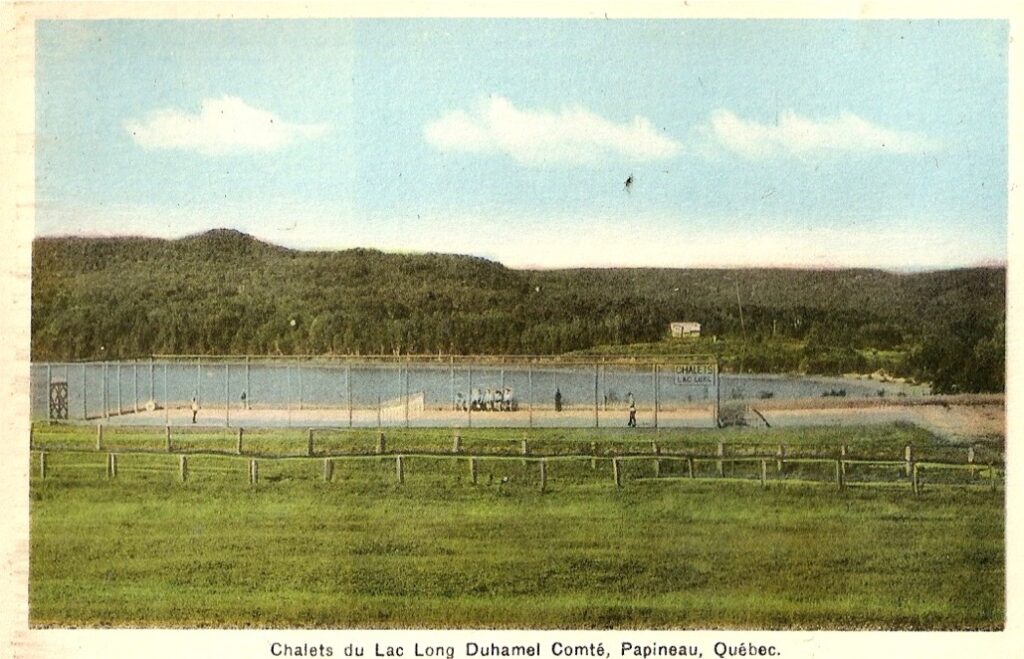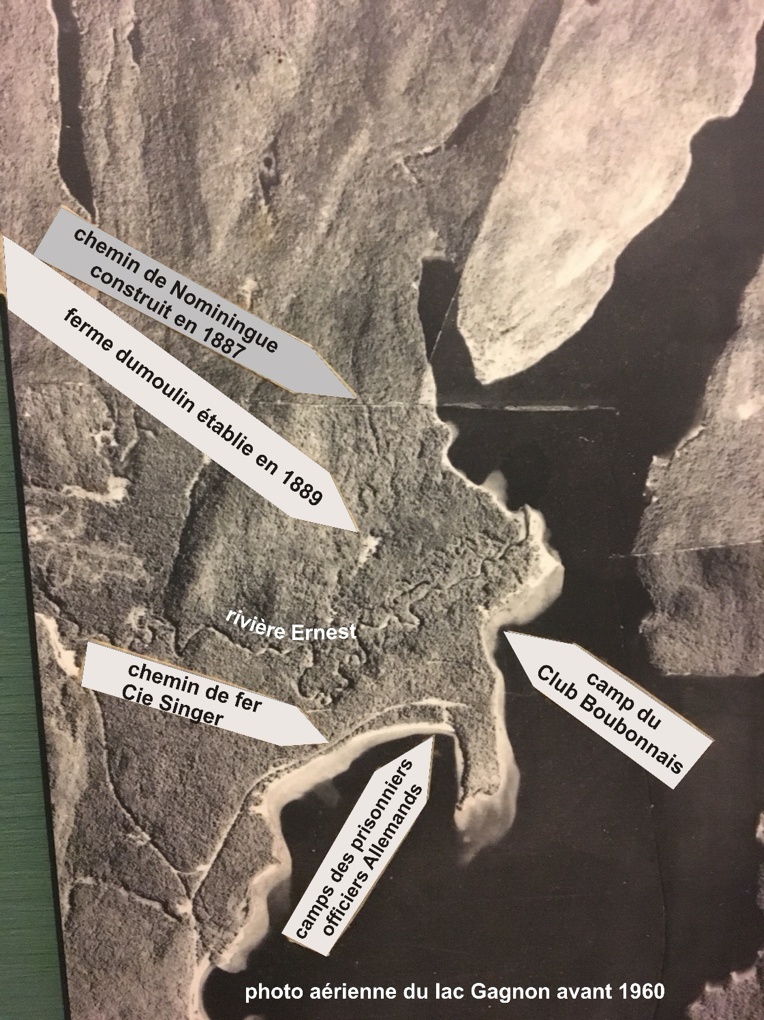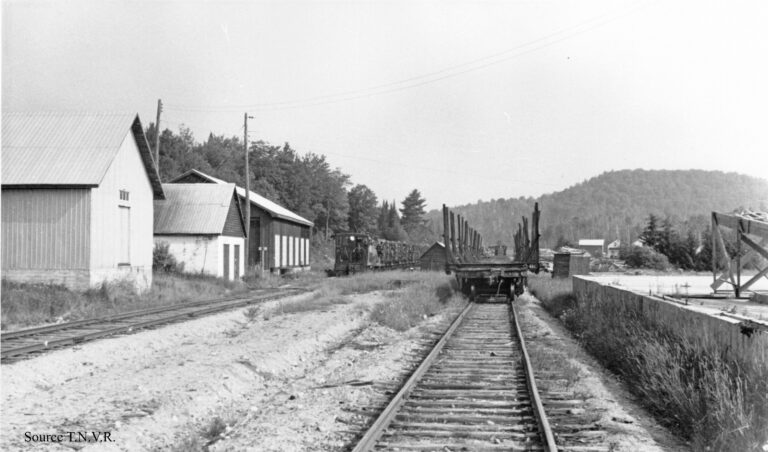Long Lake Chronicles
The Beginning:
For those of us who have been living at Lac Gagnon since 1950, writing a chronicle about the Lake is not just about looking back and remembering our early days there, but it also means recounting its early history, including its pre-1968 time when it was called Lac Long or Long Lake. This chronicle is not meant to be a history lesson, but it does require a brief look back in time into the history of the region. It will also be a series of short stories that will give an idea of what the lake was like then and what it is now without being pretentious. The idea for this chronicle came about after discussions with Louis St-Hilaire, the current president of the Association des propriétaires du lac Gagnon (APLG). He is an “old” lake man like me… or almost. My oldest memories date back to about 1950. Before that, they are the versions of my grandfather Albert. His own memories are those of his father Georges, who baptized some of his children in Duhamel in 1902-03.

Article du journal Le Droit (17 décembre 2015)
Part 2, The Settlers' Arrival


Part 3, the Singer Company, Long Lake Cottages and the Americans’ Clubs

In 1923, the Singer Company needed hardwood, primarily yellow birch, for its sewing machines. It purchased 500 square miles of timber rights for $500,000, a territory ranging from Thurso to south of Mont-Laurier. Hardwood does not float so the company had to find another way to transport its wood. Since the W.C. Edwards Company had logged the limits of softwood in the region, the Singer Company built a railway, operated by Thurso Nation and Valley Railway (TNVR), linking the Thurso plant to Fascinant lake. Construction would take place in stages, with the first section, which went as far as Iroquois lake, being finished in 1930. The Great Depression slowed activities for a few years. Since most of the lumber of interest had been harvested as far as Chevreuil lake, in 1938, the rail line was extended towards Duhamel and completed in 1940. Singer would build houses for its employees and make Duhamel its headquarters.
World War II would see an increased demand for special lumber to manufacture items such as plane propellers. In 1942, the railroad was extended to mile 43, John’s Creek (between 3560 and 3986 ch. du lac Gagnon West). In 1943, the railroad was further extended to mile 47. A spur was constructed to the shores of Long Lake, at the Grande Baie beach. This is where Camp 15, a collection of cabins knows as the camps des Allemands was constructed. In the fall of 1943, the government ordered that about 40-50 German prisoners be transferred there. Most were detainees, but about seven or eight of them were captured military prisoners of war. Given the labour shortage, the prisoners worked on building the railroad and as loggers. Well-fed, and under the watchful eye of benevolent guards employed by Singer, with the exception of Warden Landriault, a former Bordeaux prison guard, few were tempted to escape. At the end of the war, some decided to stay in Canada.
Long Lake Cottages
Around 1938, another event was to give tourism a boost at Long Lake. Jo Aubry bought several lots along the lake (lots 44 to 48 in Rang VI) from a Mrs. Cléroux. He sold his share to his three brothers François, Ernest and Gérard. Over the years, François remained the sole owner until his death in 1998. With the help of a landscape architect, he developed the land so that he could build about twenty summer cottages, an office, a tennis court that could host provincial championships, multiple playgrounds, a dance floor, a convenience store and even a bread oven to serve the customers! Unless you’ve seen pictures from that time, you cannot imagine what the layout was like. A majestic entrance arch bordered by trimmed spruce hedges that extended to each access road to the cottages, cone-shaped trimmed spruce trees, a diving board, boat house, bark canoes for rent, an impressive quantity of numbered rowboats, etc. In short, a complex, known as the “Long Lake Cottages”, worthy of a large outdoor centre! Of course, it should be remembered that at the time, the territory along the road from Duhamel to the Aubry’s was already cleared and cultivated, as you can tell by the size of the trees in these pictures.
Their clientele, mostly outsiders and many of them Americans, came especially for fishing and hunting. It was the golden age of these activities! Some even came by plane. Several people from Duhamel served as guides, including Aurèle Nault, a colourful character, and Hyacinthe Canard Blanc.
Every year there was a major canoe race, which drew crowds of people from the village and surrounding area. The provincial championship was at stake! Schools and scout groups were also hosted. In short, it was “the” place to be!
Two other locations also catered to tourists. First Arthur Lamontagne, south of the Poliquin Marina (see aerial photo). Then, at the end of the road, Lionel Éthier (see aerial photo), owner of a small grocery store in Duhamel that is now the Serjo convenience store. Some of you may remember Marcel Filion delivering milk, cream and ice cream to the end of the road at that time! Outstanding service! There was only one cottage on the east side, owned by an aviator by the name of Smith. This cottage still exists and is, to my knowledge, unchanged. I’d like to add a clarification: there is no “yellow bay”, as shown on some maps. There was only “côte jaune”, so named because of the reddish-yellow sand hill located on the 1st beach on the east side at the south end of the lake.
The Americans’ Clubs
Around 1960, the Bourbonnais club, sensing that the lake was opening up to vacationers, left the lake, abandoning its huge cottage. The lake was once again accessible to all. Also, in 1960-61, surveyors hired by Québec City surveyed the entire lake. Leaving from the Aubry’s by freighter, the teams of surveyors and summer employees, including myself, went to a predetermined starting point. The work consisted of clearing the surveyor’s line of sight with an axe or saw and measuring the distance with a “chain”. This was my first job.
This marks the end of the lake’s early history; this is when cottage owners started to arrive. The rest of the chronicle belongs to you. If you have any anecdotes, funny facts, memories, photos or anything else to tell, send them to info@aplg.ca. We may write a fourth article if we have enough of them. It’s now up to us to continue protecting the lake. Those of us, like me, who knew the lake before the 1960s, are a bit sentimental about that time. What we do with Lac Gagnon or Long lake is up to us.
